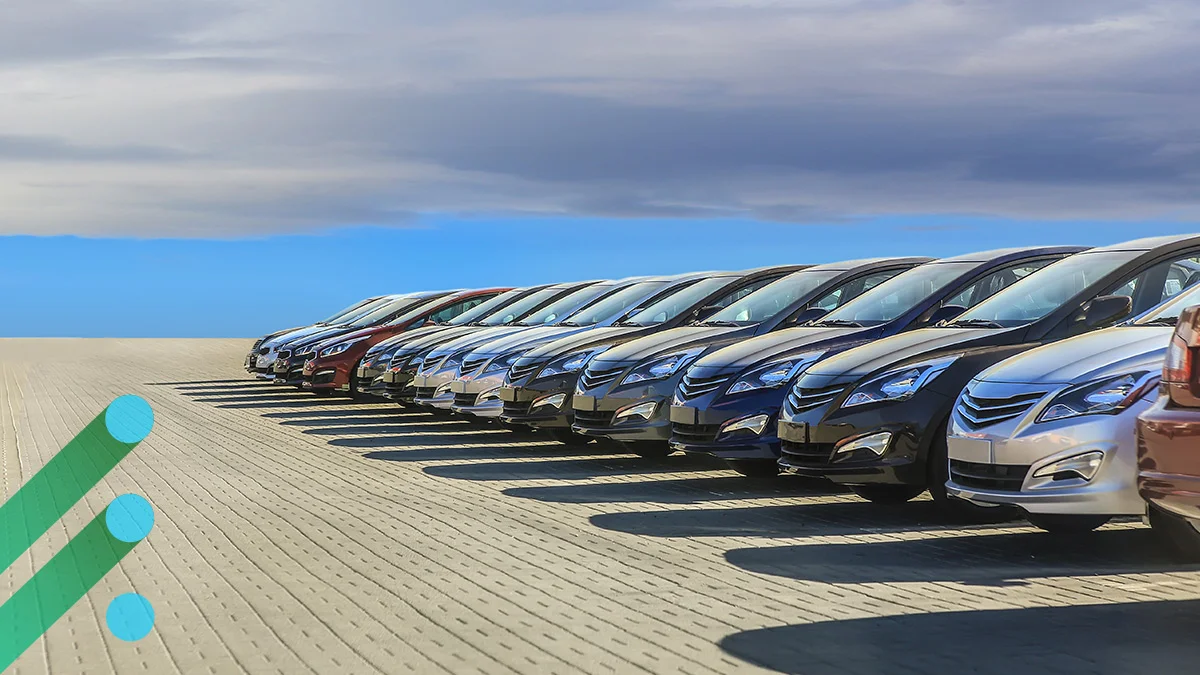22 Mar

Navigating Through the Ongoing Car Rental Shortage in 2023
The Carpocalypse.
That term sounds comical and yet can stir even the most level-headed professionals working in the car rental industry. Why? Well, it refers to the real-life vehicle shortage plaguing the sector.
So, how did that start, and, more importantly, why is it still affecting rental companies?
The answers to both those questions are not that straightforward. There are underlying elements at play here that are working in tandem. Examining these factors would help create a dedicated plan to deal with this crisis.
But first, let’s start by examining two interrelated factors to grasp the complexity of the issue.
Rental Shortage: A Never-Ending Loop?
Nicole Kobie, an author at Wired, has a personal anecdote regarding the ongoing car rental shortage and the resulting fare disparity.
While Kobie elaborates on the specifics of her trip in finer detail in the article, the most striking point she makes is related to the unavailability of cars and exorbitant rental prices.
Regardless, at least Kobie was fortunate enough to finally get her hands on a vehicle, expensive or otherwise. In some places, there simply aren’t any available.
And even though this may be a hard pill to swallow, those two elements are intrinsically tied together. How so? For one, the lack of cars is directly causing a hike in rental rates. That is leading to companies losing out on a significant chunk of their customer base. As a result, they are cutting down on their fleet sizes even more.
In short, it seems hard to escape from this destructive loop.
So, what exactly happened that led to this? The pandemic, for starters. Then, the chip manufacturing shortage. And, finally, the international crisis in Europe.
Understanding the Ongoing Car Rental Shortage
When global governments began to shut things down in 2020, it made sense for rental companies to cut back on their fleet. In fact, most of the industry giants did it, followed closely by some of the mid-size and smaller organizations. Granted, those enterprises suffered significant revenue losses. Yet, it was the only viable alternative to retaining depreciating assets that could cost them a lot more.
The UK was the same. As per reports from the British Vehicle Rental and Leasing Association (BVRLA), fleet sizes were cut down by 30%.
However, when the lockdown eased and travel resumed, rental companies were taken aback to find that restocking their fleet wouldn’t be as easy as they thought.
Nonetheless, this was to be expected. You see, like the rental companies scaling back on their fleet size, the microchip manufacturers in Europe had a similar idea. After all, why continue producing chipsets when there were no cars to put them in?
Now, this can seem like an easy problem to remediate. All the chip manufacturers have to do is ramp up production, right?
Well, here’s the problem with that: The chip design phase alone takes up anywhere between 12 to 36 months. Alongside the 6 months required to boost production volume, this could easily mean an industry recovery time of around 4 years.
That’s not even considering the time needed for building up new fabrication and the production cycle, which is estimated to be around 22 months. So, altogether, that’s a little over 5 years.
This was back in early 2022. No wonder 2023 is facing the same problems.
To add to this, the ongoing crisis in Europe ended up disrupting the complex supply chains for European chip manufacturers. In other words, even if they wanted to increase their production volume, the manufacturing companies simply did not have the necessary resources to do so.
Is Anything Else Contributing to the Problem?
Considering the gaping hole that the rental shortage left behind in its wake, it was no surprise that the closest competing industry (read ride-sharing services) leaped at this opportunity.
As such, ride-sharing service providers were perfectly placed to serve as excellent alternatives. In fact, they became so popular that their numbers jumped by a significant margin. A prominent US-based organization, for example, generated $300+ million in the first 9 months of 2021. That was a 207% increase from its 2020 earnings for the same period.
Further, comparatively lower booking prices are not the only reason the average customer chooses ride-sharing services over rentals. There is also the matter of convenience. For instance, most of these companies deliver their cars directly to the arrival zone at the airport if necessary. That’s a far cry from traveling to a rental lot at the other end of town.
Still, these competing elements should not be too much of a concern. After all, when directly compared to the fleet sizes of rental companies, ride-sharing service providers have a long way to go.
What actually matters is that the car shortage has shifted the power back to the manufacturers. Previously, rental services managed to keep the prices down because automakers were producing vehicles in abundance. In short, there was a popular trend of buying cars in bulk at discounted rates.
Given their limited production capabilities, these companies can pick their own prices. In other words, the days of rental organizations buying cars in bulk are long gone. Coupled with the hike in fuel prices, this could mean that the cost of purchasing or renting a vehicle will remain expensive, at least for the foreseeable future.
Collectively, these factors are creating a bottleneck in the car rental industry; ergo, a vehicle shortage continues to plague companies and customers alike.
What Can Help with the Ongoing Car Rental Shortage?
Fleet optimization. That phrase gets thrown around a lot. However, rental companies must understand what it actually means.
Fleet optimization is, by no means, a mere expansion of your rental inventory. Instead, it is about utilizing the available vehicles you have at your disposal more effectively.
Consider this example:
Customers from Location X primarily book economy cars. Now, will deploying luxury SUVs to Location X help you drive more bookings? You can even throw in a discount to help matters. The answer will remain the same.
A better approach would be to adjust rates for economy cars based on demand projections. So, if you anticipate a surge in bookings in the next 90 days, you could incorporate incremental hikes every alternate week or so.
Of course, that also means you must have access to accurate market data. That’s precisely where Rev-AI steps in.
What exactly is Rev-AI & How can it Help You?
One of the most advanced AI-powered revenue management dashboard in the current market, Rev-AI has been designed with one objective: Help you manage your revenue, fleet, and rental rates optimally, thereby increasing your margins.
How exactly does it do that, you wonder?
For starters, the system analyzes 70 data points to identify upcoming booking patterns in a particular area. That’s in addition to tracking 20 macro and micro demand indicators, including the following:
- Scheduled airline capacity
- Online hotel searches, bookings, and rates
- Google search trends
- Upcoming regional events, holidays, and festivals
- COVID-19 severity index
- Projections around vaccinations
- Weather forecasts
- Traveller’s demographic and travel purpose
- Average footfall in a designated location
- Weekly and annual timeframes
Then, there is the consolidated ‘Revenue Insights’ dashboard that gives you access to details such as:
- Most booked car types
- The average length of the rental period
- Daily and overall booking rate
- Projections around location and channel demand
- Number of cancellations, advanced booking requests, and average timeframes
Collectively, these metrics tell you when, where, and how to deploy your fleet. Let’s go back to the example of Location X to understand this better:
Rev-AI consolidates information from its data points and lets you know that Location X is about to experience a massive surge in bookings. Concurrently, the number of cancellations for SUV cars in that area sits at a staggering 70%. So, what do you do here?
You scale back on your SUV vehicles for the time being, deploy an increased number of economy cars and implement a nominal cancellation fee. The solution is simple, easy, and, most importantly, handed directly to you.
That’s what Rev-AI offers – Seamless, flexible decision-making that enables you to adapt to any market changes without much effort on your part.
Smarter, Better & Yet Simplified
The team behind Rev-AI recognizes how vital data is to making better organizational decisions. However, accuracy does not mean complexity.
As such, our platform offers a simplified, consolidated UI that puts all the information you need only a few clicks away. More importantly, with guided management and dedicated AI price recommendations, you have the necessary tools to analyze and implement the insights you gain from the system.
Of course, a better way to explain how all of this works would be in person. So, why not have a chat with our experts?
That would also give you a better look at the one tool that could be instrumental in taking your rental company to unparalleled heights.
Reference Links:
https://www.wired.co.uk/article/car-rental-pandemic-shortage
https://www.washingtonpost.com/travel/tips/rental-car-shortage-prices/
https://www.travelweekly.com/Travel-News/Car-Rental-News/Supply-chain-issues-continue-car-rentals



